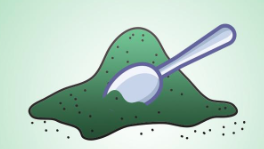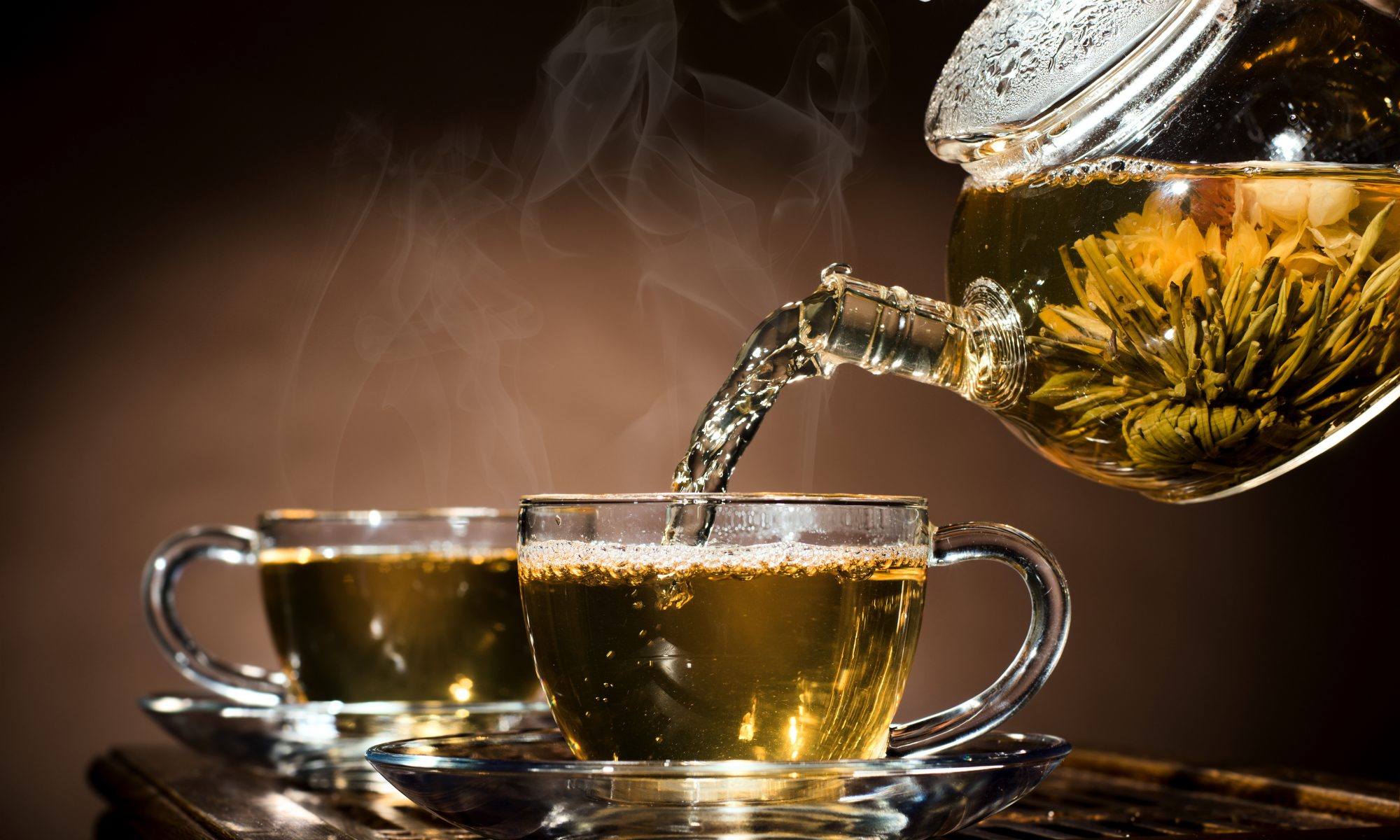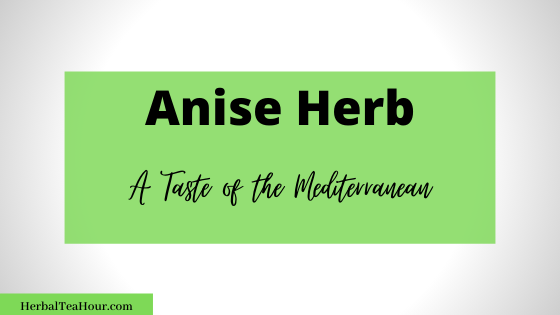ANISE HERB: INTRO
Skip Ahead To:
Did you know that the Anise Herb is one of the most widely grown herbs in the world? Particularly used in the Middle East, this herb is often categorized as a “flowering plant” – its also the base for Anise herbal tea!
The Anise herb is very similar to other types of herbs or spices such as the fennel. While the Anise herb serves as food to some insects (moths, for example), insects aren’t the only things consuming Anise. The Anise herb can be used to make several items like alcohol and tea. Today, we’re more interested in the latter, and how you can use the Anise Herb to make one of the most delicious cups of herbal tea that you’ll ever consume!
Anise Herb: Overview

Please note: This post contains affiliate links. An affiliate link means that we may earn advertising/referral fees if you make a purchase through our links.
In this article, we’ll explore how the Anise herb helps to create its sumptuous tea! We’ll then take a look at the best recipe for preparing this tea – don’t worry, we’ve kept it really short and easy to follow. Rounding things up, we’ll take a look at some features every Anise herb product should have and which ones are the most critical for creating the finest Anise based herbal tea!
I like to learn from the experiences of others, and sometimes rely on their research to guide me in the right direction. That is why this post also includes a link to a product page for a particular type of Anise herb that we like to use when making Anise tea! This way, if you don’t want to search through endless offerings of Anise herb, you can rely on us to do the work for you! I have also included a short section detailing my experience with Anise herb (particularly in the form of Anise tea), and have included some “pros” and “cons” for those of you who like it short and sweet!
The Anise Herb – Learning the Basics

Please Note: As an Amazon Associate, I earn from qualifying purchases.
Did you know that the source of the Anise Herb’s versatility is its seed? Yes, its seed is very powerful and unique! Did you know that the seeds of the Anise Herb flower have one of the highest levels of oil concentrations?
The Anise herb is native to many places in the world. In addition to the Middle East, Southwest Asia, Mexico, and Spain are all areas where the Anise herb grows plentifully!
Anise is also very popular because of its perceived health benefits. Many report claim that Anise aides with depression, constipation, and digestion problems. Perhaps this is because it comes with a truckload of nutrients! Iron, vitamin B6, copper, and calcium are just some of the nutrients found in the Anise seed – all of which are buildings blocks in helping your body function at a high and healthy level!

Ok, but what does it taste like? The Anise seeds have a sweet taste! It’s often compared to the taste of the black licorice. I like to call it a “sweet and earthy” taste! This sweet taste makes it the perfect spice for flavorful teas and allows you a great degree of room to express your creativity and experiment with different blends, infusions and sweeteners!
The Anise tea, a derivative of the Anise herb, is really popular today! One reason for its growing popularity is the straightforward process of preparing this tea – nothing complicated about it, and a very tasty reward once complete! Let’s have a look at two recipes for preparing this tea!!
Simple Recipes: Anise Tea

The Anise Tea can be served with many other items. Its actually a great compliment to manny dinner time meals. The tea can also be taken with just milk, leaving the final product with a sweet and yummy taste.
We’ll be considering two recipes – the “Anise Fusion” and the “Anise Milk” with tea. The steps are similar with few differences in between.
To help you understand these recipes better, we’ve broken them down into the ingredients used and the steps to follow. Don’t worry, we can’t stand overly complex listings of ingredients or confusing recipe instructions – you won’t find either of those on HTH!
Anise Fusion
Simple Ingredients
- Anise Seeds (1 teaspoon)
- Water (2 cups)
- Sweeteners (optional) (we like to use honey)
Easy to Follow Instructions
Step One. Heat up your water. We recommend you use a teapot. Heat up the water until it boils. Remember that the time in which it takes to bring your water to a boil may vary based upon your altitude.
Step Two. Prepare your Anise seeds. Anise seeds will have to be ground or crushed. This can be done with a mortar (or a pestle and bowl). This process helps to bring out the flavor and aroma hidden within the seeds. The more you grind, crush or slice your seeds, the more flavor and aroma you release!
Step Three. Add the crushed Anise seeds into your infuser. If you plan on using a sweetener like honey, they should also be added to the infuser. Make sure your water is no longer being heated at this point.

Step Four. Allow it to simmer or steep. We recommend that it simmers for 3-5 minutes. You can steep for longer periods of time (5-7 minutes) if you want a stronger flavor. The flavor can only get so strong, however, so don’t steep for 20 minutes and expect a super strong product!
Step Five. Pour your tea into a mug. Use your strainer to remove particles of the Anise seeds. You don’t want remnants of the seeds floating around your cup or getting stuck in your teeth! Your tea is ready to serve and enjoy!
Anise Tea with Milk
Simple Ingredients
- Anise Seeds (1 teaspoon)
- Milk
- Sweeteners (Optional) (Again, like the saying goes, “milk and honey”)
Easy to Follow Instructions
Step One. Instead of using hot water here, we use milk instead. The milk is used as a substitute for water. That is the main difference between this recipe and the others. Make sure the milk is warm, but not boiling, of course.
Step Two. Crush the Anise seeds. Do this by following the same process from the earlier recipe (e.g.: pestle and bowl). Crushing these seeds helps in many ways – please never skip this step. You get to taste a stronger flavor which translates into a wonderful tea!
Step Three. Place the crushed seeds into an infuser. Again, the smaller the sides, the better. If you are going to be using any form of sweeteners, they should also be added. The milk should also be added.

Step Four. Steep for 3-5 minutes. Remember that the longer the steeping time, the stronger the tea will be. However, you are probably wasting your time by steeping for in excess of 10 minutes.
Step Five. With the help of a strainer, remove the particles remaining in your tea. If you’ve ground the seeds into a very small size, you may want to strain a couple of times to make sure that you’ve removed everything! Your tea is ready to serve and you can tell your friends that you made it from scratch just like a real professional!
The Anise tea can be prepared in various ways – that’s one of the reasons that it is literally booming in popularity! The possibilities for creativity are seemingly endless! Cinnamon Anise tea is an example – pretty darn good during periods of colder weather or as an “after dinner” tea. You can take time to learn all these other recipes. It surely gives more options!
Anise Herb – What to Look For

If you are going to be using the Anise herb to make Anise tea, we’ve picked four major factors that will make a HUGE different quality and taste-wise. By no means are these the ONLY important things to look for but, if you find a product that hits all 4 boxes, then you know you’ll be satisfied with your purchase!
Certified Products
No matter what flavor you want to get, the presence or absence of certification cannot be ignored. The Anise Herb just like any herb is part of the herbal industry. There are certain standards all products have to meet.
For example, USDA organic is a regulatory body that looks at the organic nature of the product. It discourages the addition of additives and other substances during production. We agree with this approach, believing that Anise is better left just as Mother Nature intended, additive free!

Kosher is another certification that boosts the reputation of the product. Some people even have dietary restrictions that require food and beverage products be Kosher certified. We think it matters in terms of taste too!
The Presence of Caffeine and Gluten
Most people like herbal teas because of the absence of caffeine and gluten. It all depends on the reasoning behind your herbal tea consumption. While the majority of products might not have caffeine, some do.

We suggest that you keep a close eye on this, especially if you have sensitivities to gluten or caffeine. It’s often easy to expect the standards to be kept without confirming if they are actually followed – a close inspection of the labels ought to do the trick for you! Products that are caffeine and gluten-free are, in our experience, the safest bets!
Storage Materials
The type of material where the product is kept matters – after all, any food and beverage product is going to have an expiration date that needs to be considered. When Anise seeds are stored in aluminum foils, it keeps the seeds fresher. Kraft bags are also a viable option. Whichever you select, do your best to keep the air out of the sack or bag – air is the enemy to longevity, believe it or not!

You’ll also notice that Anise seeds do better with pouch than separate packs – its almost like the seeds like to be kept together. Keeping the seeds fresh leads to better aroma and lifespan – it also protects your investment!
Price
While you want the highest quality, you also have to consider the price of the product. With Anise seeds, it’s possible to get really good products at an affordable price. Odds are, if you see one brand that is priced far higher than the average, they aren’t actually offering you anything “special” – maybe just marketing or fancy packaging! When you are on a budget, getting the price right is important – you can find great quality without buying the most expensive of the bunch!
To achieve this, we recommend comparing the features offered by each product. Remember, check to see if one type of Anise Herb is Kosher, where another is not. Also be sure to check on the origins of the herb (i.e.: from what region of the world does it originate). Doing some shopping can also help. The key is to make sure you get value for your money!

Other things are also worth considering. The quantity of Anise seeds you get as well as the expiry dates have to be considered. Be careful to align your purchase quantity with your rate of consumption. If you drink a ton of anise tea, or if you use a lot of Anise herb per cup, then you’ll want to buy greater quantities!
The absence of one or more of these features can be considered as a red flag. They can guide you when making a crucial decision. While you can find a lot of “good” Anise herb, the secret is finding the “best”! Let’s learn about some of them!
Anise Herb – Buying the Best
Still looking for further direction on the right product to buy? Here are a few suggestions.
This particular Anise offering comes in two packs that weigh 6 ounces each. The size of the packs shows us that its name is no fluke – it truly is a “bulk” offering!
This product can be used for a lot of things – that’s one of the reasons we are so fond of it. From baking to the production of alcoholic drinks, the opportunities here are endless – of course, we prefer using it in the creation of an Anise herbal tea!

The process of producing these seeds is pure and free from additives – just like Mother Nature intended. It comes with a USDA certification which adds further assurance. USDA certifications aren’t just “handed out”, a manufacturer has to navigate an evaluation process to become certified!
Its storage in pouch packs prolongs the freshness of the seeds. This is great in terms of ensuring that your seeds stay fresh for an extended period of time. Extended longevity is a great bang for your buck – you won’t have to worry as much about closely tracking those pesky expiration dates!
My Experience

I really like this particular kind of Anise herb – it has each of the qualities that I look for when separating the “best of the best” from the “rest of the pack”. I liked the type of pouch it comes in – wisely designed for shelf life considerations. The seeds stay fresh for a very long time! I used the seeds to prepare Anise Tea with milk and it was super delicious!!
I found it also useful when baking – though I must admit, I am a better brewer of tea than I am baker of bread! It added a unique taste when I got creative with it! Another interesting result of my consumption habits was that it seemed that my indigestion and headaches decreased in severity and frequency (I also experienced this with Mint Tea though it was the Organic Mint Tea where the effect was most noticeable). Was this due to the Anise tea or something else? I guess I don’t know, but at least the Anise tea tasted great! If it comes with a littler headache and ingestion relief, then I guess I’ll take that too! It felt almost heaven-sent!

Also, Anise is generally side effect free, unlike certain kinds of herbal tea, like hibiscus tea, for example (you can learn about hibiscus tea side effects, here)!
I’ve outlined some pros and cons, if you are in to that type of thing, with respect to my Anise herb (via Anise tea) consumption experiences. Maybe one of my “pros” is more of a “con” to you, as no two tea drinkers are exactly the same. However, I hope that this list serves you as a quick reference guide!
Pros
- Caffeine and gluten-free (I can sleep)
- Good storage (doesn’t spoil quickly)
- Prolonged freshness
- Free from additives and other substances.
- Large quantity
- USDA certified
- Affordable price
Cons
- Large demand. This can make it difficult to find.
This particular Anise offering comes in a stand up pouch. Kind of cool, huh? Very convenient when you are working with it in the kitchen. This pouch has foils that preserve its freshness.
This Anise Tea also comes free from caffeine. This is why it is so popular among those of us who like to take our tea in the evenings! It’s USDA organic certified – so you know that you can consume it guilt free! Also, in terms of price, you’re not going to have to break the bank to get a top quality Anise product. Remember, its often not how much you spend that makes the difference. Just follow our list of important factors and you’ll be fine!
My Experience

My first impression when drinking the Anise tea was that it was a very “pure” taste. This is a hard sensation to describe, I guess you just know it when you sip it! I found the seeds fresh and easy to crush when trying to brew the tea. Good aroma, too!
The standup bag makes it easy to preserve over a prolonged period – this is a great feature, in my opinion, because you don’t have to worry about running low on fresh tea. When brewed, drinking this tea helped me stay energetic, but not jittery, and ready to work. When taken in the evening, it helped me relax. Here are some pros and cons I noticed:
Pros
- Soothing feel (again, it feels “pure”)
- Versatility
- Great storage medium
- USDA organic certified (reassuring third party certification)
- Caffeine and Gluten-free
Cons
- Low quantity (mitigate by buying multiple bags at once)
Side Note: Another fun herbal tea to work with is dandelion tea, you can learn where to buy dandelion tea here, just make sure you don’t buy anything but the best dandelion roots if you plan to make it from scratch)!
CONCLUSION

If you are a big fan of the Anise Herb, getting the right product is important. This is especially the case if you are using the Anise herb as a base from which to brew an Anise tea! This article has been aimed at providing you with a thorough education in terms of everything you need to know to make a wise decision in terms of your Anise herb purchase. We believe that this article will guide your decision making! We’re confident you will make the right decision! Oh, and be sure to ask us if you have any questions!
Comments

How did you first hear about the Anise herb? Perhaps you’d heard of Anise tea and were interested in how it was made? Did you get a chance to make one of the two types of Anise teas that we highlight above with our easy to follow recipe? Perhaps you strayed from the recipes and decided to get a little creative? How did it turn out? Be sure to share your thoughts, opinions and experiences by posting below! We read and reply to every comment and absolutely love interacting with the herbal tea community!



